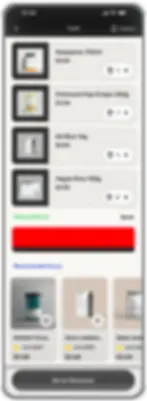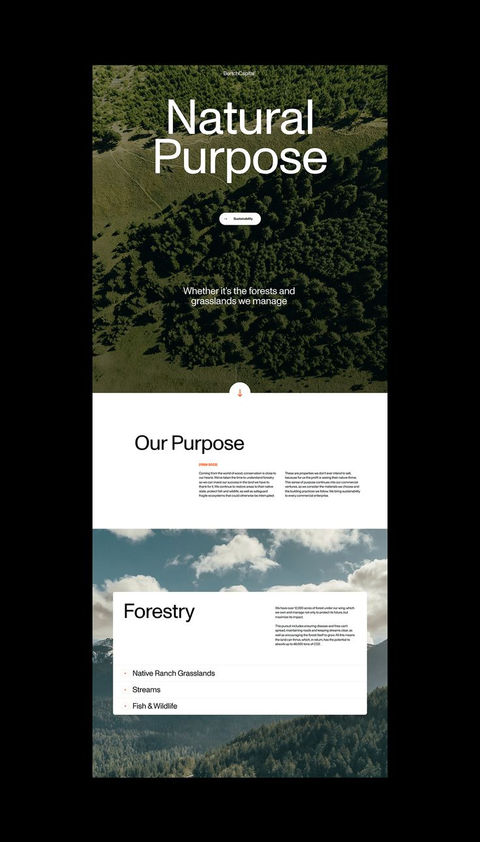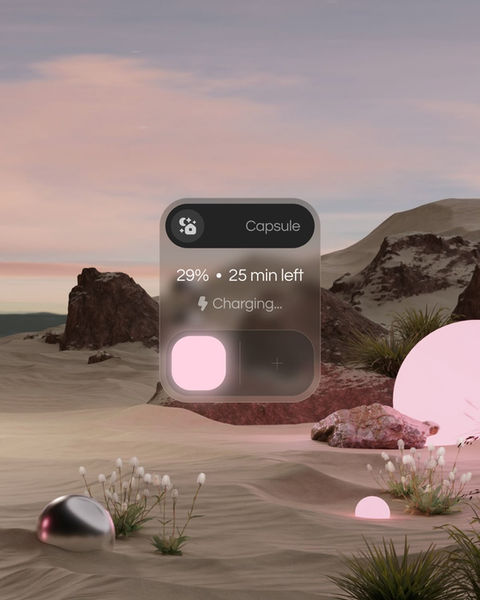Overview
ROLE :
Design,
Research,
Prototype.
TIMELINE :
7 weeks
Gantt Chart

TOOLS USED :
Figma,
Illustrator,
Photoshop,
After Effects.
Outcomes
Product Design, UX/UI, Food & Pack Design
PROJECT BACKGROUND :
This project reimagines the grocery store on a digital platform for a climate-shaken world. With rising heat, crop failures, and resource scarcity redefining what we eat, it transforms necessity into a system of joy, resilience, and balance with the Earth. Each product is designed with new eco-adherent symbols, adaptive ingredients, and functional packaging, playing into 2035 food futures. The mobile application further illustrates the narrative, showing how our everyday shopping should turn into an act of collective adaptation to our planet. At its core, it’s about rewriting how we live, eat, and endure together in a future forever changed, shown through a user's grocery order.
Overview
ROLE :
Design,
Research,
Prototype.
TIMELINE :
7 weeks
Gantt Chart

TOOLS USED :
Figma,
Illustrator,
Photoshop,
After Effects.
Outcomes
Product Design, UX/UI, Food & Pack Design
PROJECT BACKGROUND :
This project reimagines the grocery store on a digital platform for a climate-shaken world. With rising heat, crop failures, and resource scarcity redefining what we eat, it transforms necessity into a system of joy, resilience, and balance with the Earth. Each product is designed with new eco-adherent symbols, adaptive ingredients, and functional packaging, playing into 2035 food futures. The mobile application further illustrates the narrative, showing how our everyday shopping should turn into an act of collective adaptation to our planet. At its core, it’s about rewriting how we live, eat, and endure together in a future forever changed, shown through a user's grocery order.

FT

FT
FRESH TAKE
A Speculative Design UX/UI project that journeys through a Digital Grocery Shop in 2035.

THE BRIEF :
HOW MIGHT WE REIMAGINE THE ONLINE GROCERY STORE EXPERIENCE FOR A CLIMATE-SHAKEN FUTURE, WHERE
PRODUCTION, ACCESS & TASTE MUST BE REINVENTED & TRANSFORMED TO LIVE IN BALANCE WITH
THE EARTH?
EVEN 1°C IS A MASSIVE CHANGE
.jpeg)
After more than 10,000 years of relative stability — the full span of human civilization — the Earth’s climate is changing. Since the 1880s, the average global temperature has risen by about 1.1 degrees Celsius, driving substantial physical impact in regions around the world.
As average temperatures rise, acute hazards such as heat waves and floods grow in frequency
and severity, and chronic hazards such as drought and rising sea levels intensify. 1°C sounds tiny, especially when we’re used to daily weather swings of 5–10°C or more. But in the context of global climate systems, even a small sustained rise is massive.
The new climate reality : Some climate change is locked in, and we live in a new, unknown environment. It is time for humans to do some damage control to ensure continuity and survival , as our activities are undoubtedly the primary driver of temperature increase over the past two centuries.
.jpeg)
EVEN 1°C IS A MASSIVE CHANGE
and floods grow in frequency and severity, and chronic hazards such as drought and rising sea levels intensify. 1°C sounds tiny, especially
when we’re used to daily weather swings of 5–10°C or more.
But in the context of global climate systems, even a small sustained rise is massive.
The new climate reality : Some climate change is locked in, and we live in a new, unknown environment. It is time for humans to do some damage control to ensure continuity and survival , as our activities are undoubtedly the primary driver of temperature increase over the past two centuries.
After more than 10,000 years of relative stability — the full span of human civilization — the Earth’s climate is changing. Since the 1880s, the average global temperature has risen by about 1.1 degrees Celsius, driving substantial physical impact in regions around the world.
As average temperatures rise, acute hazards such as heat waves
THE BRIEF :
HOW MIGHT WE REIMAGINE THE GROCERY STORE EXPERIENCE FOR A CLIMATE-SHAKEN FUTURE, WHERE PRODUCTION, ACCESS & TASTE MUST BE REINVENTED & TRANSFORMED TO LIVE IN BALANCE WITH THE EARTH?
.jpeg)
EVEN 1°C IS A MASSIVE CHANGE
we’re used to daily weather swings of 5–10°C or more. But in the context of global climate systems, even a small sustained rise is massive.
The new climate reality : Some climate change is locked in, and we live in a new, unknown environment. It is time for humans to do some damage control to ensure continuity and survival , as our activities are undoubtedly the primary driver of temperature increase over the past two centuries.
After more than 10,000 years of relative stability — the full span of human civilization — the Earth’s climate is changing. Since the 1880s, the average global temperature has risen by about 1.1 degrees Celsius, driving substantial physical impact in regions around the world.
As average temperatures rise, acute hazards such as heat waves and floods grow in frequency and severity, and chronic hazards such as drought and rising sea levels intensify. 1°C sounds tiny,
especially when
THE BRIEF :
HOW MIGHT WE REIMAGINE THE GROCERY STORE EXPERIENCE FOR A CLIMATE-SHAKEN FUTURE, WHERE PRODUCTION, ACCESS & TASTE MUST BE REINVENTED & TRANSFORMED TO LIVE IN BALANCE WITH THE EARTH?
IN THE CONTEXT
OF THE BRIEF
THE FOLLOWING DESIGN QUESTIONS ARE RESEARCHED & EXPLORED TO FORMULATE


KEY INSIGHT
In 2035, the grocery store is no longer a monument to excess, but a gallery of essentials — refined, intentional, and deeply human. In a world reshaped by climate volatility, the everyday act of eating becomes an elevated ritual. Food is no longer just sustenance; it is signal and symbol — designed, distilled, and deliberate. Scarcity reshapes value, and each item on the shelf speaks to innovation under pressure: lab-grown proteins, climate-resilient crops, edible materials once unimaginable.
Here, the line between nature and technology is not blurred but redefined. The artificial becomes artisanal; the synthetic becomes sacred. Consumption shifts from impulse to introspection. Functionality reigns. Ethics replace aesthetics. Human restraint is no longer a sacrifice, but a new form of consciousness and a new way of being.
Shopping becomes an immersive experience — a quiet ceremony of choice, awareness, and alignment. Each product carries the weight of story: regeneration, adaptation, survival. Fresh Take is not just a store. It is a statement — of how humanity endures, evolves, and elevates in the face of collapse.

KEY INSIGHT
The grocery store of the future will no longer be a cathedral of abundance, but a curated sanctuary of survival and sophistication. In a climate-shaken world where the staple daily harvests grow fragile, food transforms into something more symbolic: an object of design, a ritual of resilience, a luxury defined by scarcity. Here, the boundaries between natural and synthetic dissolve, as molecules are reimagined in laboratories and the new and unknown takes place as essential resource. Function replaces fluff, ethics replace excess, and restraint becomes the ultimate indulgence. The act of shopping itself evolves into a sensory experience — intentional, precious, and reverent — where every item tells a story of balance with the Earth and of humanity’s ability to reinvent in the face of crisis.
THE CREATIVE CONCEPT
FOLLOWING THE HOW MIGHT WE, THE BRIEF REQUIRED DESIGNING FOR THE FOLLOWING :
1. PRODUCT DESIGN
2. FOOD DESIGN & FORECAST
3. PACK & BRAND DESIGN

App UI Design Moodboard
UI elements lean on glass-like materials, soft gradients, and modular cards. The visual tone is ambient and immersive, often grounded by natural imagery — suggesting that even in a digitized system, nature and the planet remain central. The interface becomes a lens to view the world — not a screen to escape it.
Brand & Pack Moodboard
In the grocery store of 2035, packaging is built for clarity, efficiency, and quiet impact. The brand language is intentionally minimal, letting the material, form, and content speak to a future defined not by excess, but by considered restraint. Product language is sparse, direct, and informational — it reads like data, not advertising. Surfaces feel both futuristic and elemental with an intentional ambiguity between what is natural and what is synthetic — a reflection of the broader context in which these products exist.

FRESH TAKE MOBILE APP PROTOTYPES
Ordering Flow on Fresh Take

Checkout Flow on Fresh Take

Payment Flow on Fresh Take

Delivery Flow on Fresh Take

Dark Mode & Light Mode


Figma Wireframes

App Development Future Considerations:
-
Integrate origin traceability directly into packaging — allowing users to follow the journey of a product from its source (country, city, farm, or lab) to shelf, reinforcing transparency and trust.
-
Expand on gamified experiences that reward sustainable behavior — turning eco-conscious shopping into an ongoing, interactive system.
-
Explore and showcase next-gen delivery methods that reflect the realities of 2035 — from localised pick up hubs to low-emission drone drops to perhaps community-based resupply models.



REFERENCES & BIBLIOGRAPHY

In a 2023 speech, UN Secretary General António Guterres stated that the era of global boiling has arrived. “Climate change is here. It is terrifying. And it is just the beginning,” Guterres said. “It is still possible to limit global temperature rise to 1.5C [above pre-industrial levels], and avoid the very worst of climate change. But only with dramatic, immediate climate action.”
(Source : The Guardian)


“Function. Everything has to have a function. There would be so little vanity post-apocalypse and that was one of the first things we said about our survivors in the movie: vanity was out of the window. It’s about day-to-day survival, so everything needed to be functional and utilitarian.” says Gareth Pugh, on designing costumes, sets and dressing for upcoming future apocalyptic film 28 Years Later.
(Source : Dazed Digital)

For food systems, we focus on the likelihood of a multiple-breadbasket failure affecting wheat, corn, rice, and soy, and, specifically in Africa, the impact on wheat and coffee production in Ethiopia and on cotton and corn production in Mozambique.
(Source : McKinsey.com)
A two-year drought and record heat have cut Spain's olive crop in half, doubling olive oil prices. Climate change will continue to drive prices up.
(Source : NPR.org)




With inflated cocoa prices here to stay and the industry's murky supply chain still problematic, producers are starting to invest in more sustainable cocoa-free alternatives to chocolate. For example, San Francisco based Voyage Foods uses proprietary technology and upcycled seeds and fruits to make a plant-based chocolate alternative, using 99% less blue water and 84% fewer greenhouse gases. Co-founder Adam Maxwell says "These are innocuous, whole ingredients that people understand. But what is special is the transformation of these low or no value materials."
(Source : TrendHunter.com)
Unilever announced it will use at least 25 percent of recycled plastic in its packaging by 2025; by which time Coca-Cola aims to source 50 percent of its plastic bottles from recycled content.
(Source : McKinsey.com)
Scientists trying to create alternative food sources for astronauts believe we could grow meat on demand, without slaughtering fish or animals. "This could save you having to slaughter animals for food,” says project leader Morris Benjaminson, a bioengineer and veteran of a number of NASA projects on recycling waste onboard spacecraft."
(Source : NewsScientist.com)
In Australia, 84% of people have been directly affected by at least one climate-fuelled disaster since 2019, spanning heatwaves (71%), floods (45%), bushfires (43%), droughts (37%) and destructive storms (35%)
(Source : ClimateCouncil.org)


Food Designer & Futurist Laila Snevele poses the question - Is our understanding of Natural and Synthetic changing? There are about 1000000 flavour molecules that in different combinations create different flavour sensations - whether they are extracted from nature, or made in lab using "artificial" human methodologies. When we hear chemistry and chemicals in relation to food we want to stay away from it, but the truth is, all our food is made out of chemical compounds and humans have found a way to copy the exact molecules in labs.
(Source : Sensoverse.com)


The biggest source of agricultural emissions—almost 70 percent—is from the production of animal meat. Animal protein from beef and lamb is the most GHG-intensive food, with production-related emissions more than ten times those of poultry or fish and 30 times those of legumes. The culprit? Enteric fermentation inherent in the digestion of animals such as cows and sheep. In fact, if the world’s cows were classified as a country in the emissions data, the impact of their GHG emissions (in the form of methane) would put cows ahead of every country except China.
(Source : ChatGPT)

FOODres.AI is a desktop 3D printer developed by MIT graduates Biru Cao and Yiqing Wang that converts household food waste into functional objects using artificial intelligence. A mobile application supports the system’s operation. It includes a self-trained object detection model that identifies types of food waste using the phone’s camera. Based on the detected material, the app suggests suitable ‘print recipes’ that account for the physical properties of the waste. The app also provides a library of design templates, and users have the option to upload custom models. The interface is designed for intuitive use, requiring minimal prior experience with 3D printing.
(Source : Designboom)
Rethinking the perception of food and drink in relation to nature, the Solar Kitchen Restaurant is based on a kitchen concept where the food will be cooked using only alternative energy: the sun. ‘Cooking with the sun is entirely different from traditional cooking. Moreover, concentrating heat through the parabola affects the food differently than standard sources of heat and positively influences the texture and flavor of the food.’
(Source : Designboom)
-
https://thecounter.org/lab-grown-cultivated-meat-cost-at-scale/
-
https://www.historytoday.com/archive/history-matters/end-turtle-soup
-
https://fortune.com/2025/07/14/gen-z-killed-breakfast-cereal-vegetables-kellogg-sugar/
-
https://gizmodo.com/behind-the-hype-of-lab-grown-meat-1797383294
-
https://faithpopcorn.com/trendblog/articles/the-popcorn-report/


What we term the alt-universe—a space that we imagine to contain all possible combinations of flavor, texture and mouthfeel that closely mirror the foods we are familiar with—is well-mapped.
Mockturtle soup was created in the 1700s as an alternative to soup of green turtle, the star ingredient of which had been hunted to near extinction across the Caribbean to satisfy the appetites of wealthy Britons.1 By the late 1800s canned versions of this soup, typically made with calf’s head (brains and all) to replicate the texture and flavor of turtle meat, was sold with labels warning, unironically, for consumers to be “Beware ofImitations.” In some places, including the United States, this mock, or “alt”, turtle soup became more popular than the original ever had been.
TREND FUTURES
(Source : Mold Magazine)
.jpg)

In today's media, it is difficult to determine what is real news and what is fake news. It is easy to manipulate information and the amount of news, both true and false, is overwhelming. This leads to a lot of doubt, and creates room for the imagination to run wild. This is especially true when things are withheld or invisible, as is the case in our meat industry. After all, most people do not know where their meat comes from and it is also difficult to determine with the scale of production. In the book, "The Six-winged Chicken and Other Fabled Animals of the Food Industry", Anne Kamps is on the cutting edge of fact and fiction. She captures the spirit of the times, with all its fake news, crazy technologies and a food industry that has never been so far removed from mankind.
(Source : Mediamatic)

retgasfvfds
TREND IMPACT (pop culture)
Rethinking the perception of food and drink in relation to nature, the Solar Kitchen Restaurant is based on a kitchen concept where the food will be cooked using only alternative energy: the sun. ‘Cooking with the sun is entirely different from traditional cooking. Moreover, concentrating heat through the parabola affects the food differently than standard sources of heat and positively influences the texture and flavor of the food.’
(Source : Designboom)

















